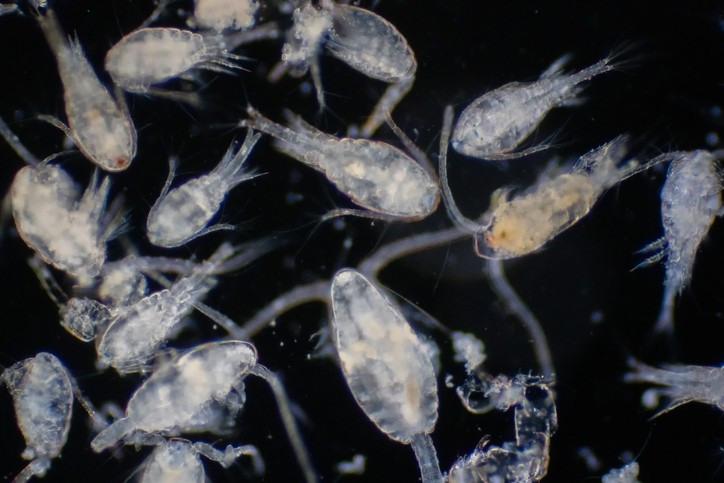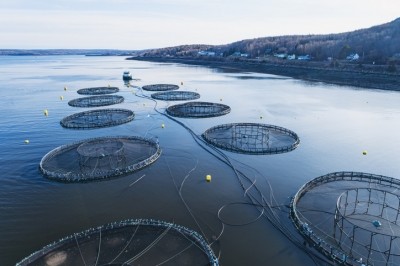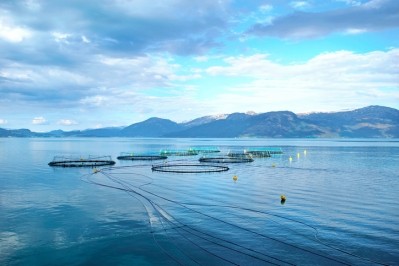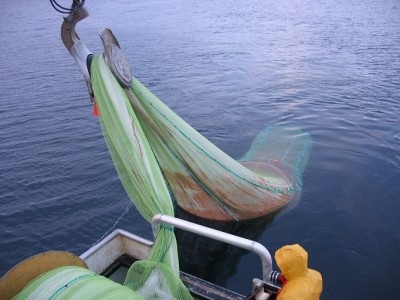Skretting and Zooca Calanus collaborate on zooplankton for shrimp feed

For the past two decades, from its base in Tromsø on the northernmost tip of Norway, startup Zooca Calanus has been working on the creation of a new bio-industry around Calanus finmarchicus.
The tiny copepod is a vital cog in the northern Atlantic Ocean’s eco-system, providing protein and omega-3 rich sustenance to a variety of marine organisms, including fish, shrimp, and whales. Its nutritional profile and abundance also make it an attractive ingredient for farmed aquaculture, amid growing pressure to adopt more sustainable practices.
“Calanus finmarchicus is nature’s starter feed, and the Norwegian Sea sees an annual reproduction of Calanus species of almost 300 million metric tons. Zooca aims to make these naturally developed nutrients accessible by producing ingredients that can preserve the nutrients in a format relevant to the industry,” Hogne Abrahamsen, Chief Sales Officer at Zooca Calanus, explained.
Long term collaboration
Sharing the startup’s belief in the copepod’s potential, aquaculture feed giant Skretting has been a strong ally in Zooca Calanus’ mission to bring Calanus finmarchicus to the aquaculture sector. For over a decase, the two companies have collaborated on the development and commercialization of various feed solutions based on the zooplankton.
“In the last 10 years we have focused on creating functional protein hydrolysates from the copepod and incorporating them into our larval formulas to great effect,” Eamonn O’Brien, global product manager LifeStart at Skretting, told FeedNavigator.
“The copepod provides a crucial role in supporting larva nutrition. We are making this feed miracle accessible to the aquaculture industry and thus providing a massive increase in resource utilization efficiency,” he added.
New format
Until now, the tiny zooplankton has been ‘hidden’ in formulations. However, the latest innovation to come out of this shared mission is the launch of canned fresh whole copepods that can be fed directly to shrimp. In November, the two companies announced a new partnership to bring this new format to market.
“One of the constant requests from our clients was: can we get the whole copepod as well? This was not an easy task as they were only available in frozen block form. This will be the first time that we can make fresh whole copepod available in convenient cans for use in the field,” said O’Brien.
He said that Skretting had been working with Zooca Calanus on this format for six years and that now was “as good a time as any” to introduce this solution to the market.
“This new partnership comes at a time when we see a strong need for additional global resources diversification. The shrimp industry is in a difficult situation with record low prices so anything that can contribute to improved performance will be received with open arms.”
Explaining how the partnership with Zooca Calanus will work, he said: “Zooca knows the resource, how to harvest and process, while Skretting knows the customers and has the network. This partnership will give customers access to this novel copepod in an easy to use and sustainable manner.”
Fresh copepods offer a natural alternative to formulated feeds and a convenient alternative to frozen copepods - particularly for farmers in tropical regions, according to Abrahamsen.
“We developed a method of gently canning copepods. They contain all the nutrients that are required by growing shrimps, which eat copepods in the wild.”
He adds: “If farmers use rotifers and artemia, they can use copepods. Artemia is in any case often enriched to mimic copepod, whereas we have the real thing.”
Scale up strategy
Zooca Calanus says that the new product is a key part of its strategy to scale up its harvesting and production, following investment in a processing plant, which opened in Sortland in 2021.
“We will soon be producing 40 metric tons of canned copepod every week,” said Abrahamsen.
“We see an opportunity to scale up and streamline harvesting, which would bring economies of scale. As a business, we have overcome many challenges related to harvesting, processing, and scaling up since we were founded over 20 years ago. Now we have the product, we have a model that is fully scalable without the need for additional capital expenditure, and we are ready to go out to the market and be an industry player.”















